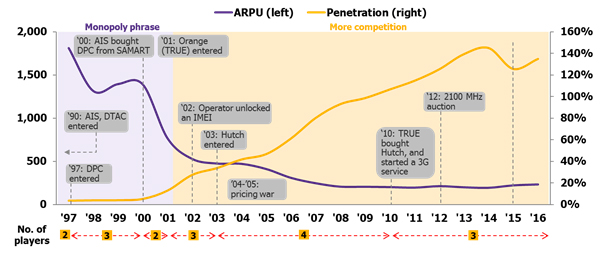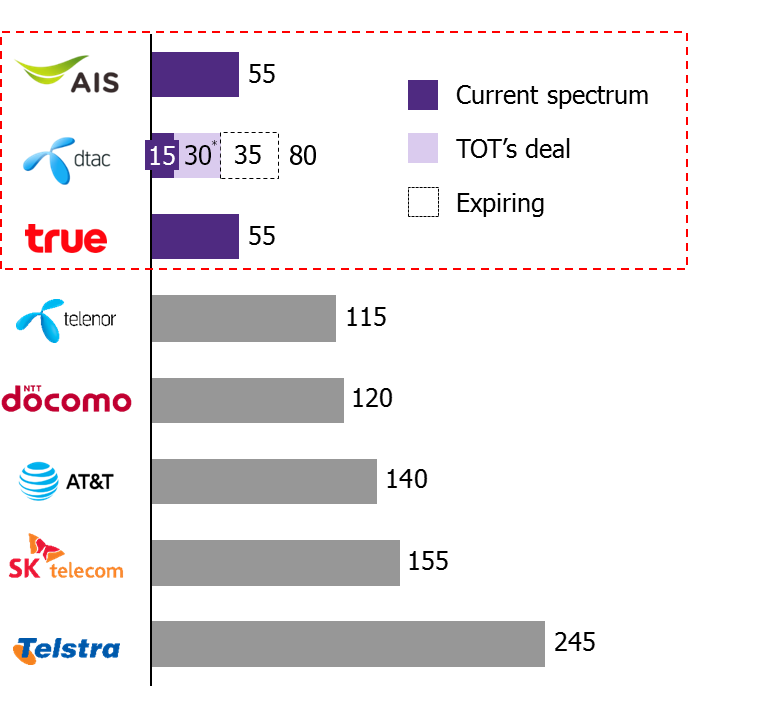Author: Puripat Sophonkeereerat
![Flash_dtac.jpg]()
![Event.png]() |
![885_20100622103059.gif]()
|
- DTAC was selected to become TOT’s new partner in providing 60 MHz bandwidth of the 2300 MHz spectrum for the next 8 years based on its proposal on technical specification and benefits package. TOT required the partner to build 1,800 base stations within the first year of operation, cover all main cities by the second year and cover 80% of the population within 5 years.
|
![Analysis.png]() |
![884_20100622103051.gif]()
|
- The deal will be beneficial to DTAC. Currently, DTAC holds a total of 50 MHz bandwidth in size; of which 35 MHz is due to expire by the end of 2018. Securing additional bandwidth therefore eases pressure on the company. Nevertheless, DTAC still faces many challenges ahead. For instance, large investment is needed to install new base transceiver stations of approximately 10 to 20 billion baht. Also, an annual rental fee of 4.51 billion must be paid to the TOT with possible delays in negotiation for the terms of contracts.
- Nonetheless, impact on competition among mobile operators is likely to remain unchanged. Price competition is already aggressive. The average revenue per user (ARPU) during the past 5 years have steadied at 200 baht, reduced by half from 15 years ago. Furthermore, other operators already hold sufficient bandwidth for service provision of roughly 55 MHz in bandwidth. EIC views that going forward mobile operators have to change strategies from price competition towards promotion of value-added services such as entertainment, cloud storage and electronic payment to raise revenue and build customer engagement.
|
![Implication.png]() |
![886_20100622103105.gif]()
|
- Operators will bid competitively for the 850 MHz and 1800 MHz spectrum in 2018. This is because DTAC still needs to maintain its low-band 850 MHz spectrum. Meanwhile, other operators will still need additional bandwidth in order to support 5G wireless services in the future, as the International Communication Union (ITU) requires operators of 5G services to hold a minimum of 100 MHz in bandwidth size.
|
Figure 1: Average revenue per user (ARPU) and mobile penetration in Thailand
Unit: baht (left), % (right)
![dtac01.jpg]()
Source: EIC analysis based on data from the National Broadcasting and Telecommunication Commission
Figure 2: Thai telcos’ spectrum holdings are relatively low comparing with those in other countries.
Unit: MHz
![2_edit_all.png]()
* TDD spectrum has been adjusted by 50% to make it comparable with FDD spectrum
Source: EIC analysis based on data from the National Broadcasting and Telecommunication Commission, Telenor, NTT Docomo and SK Telecom


